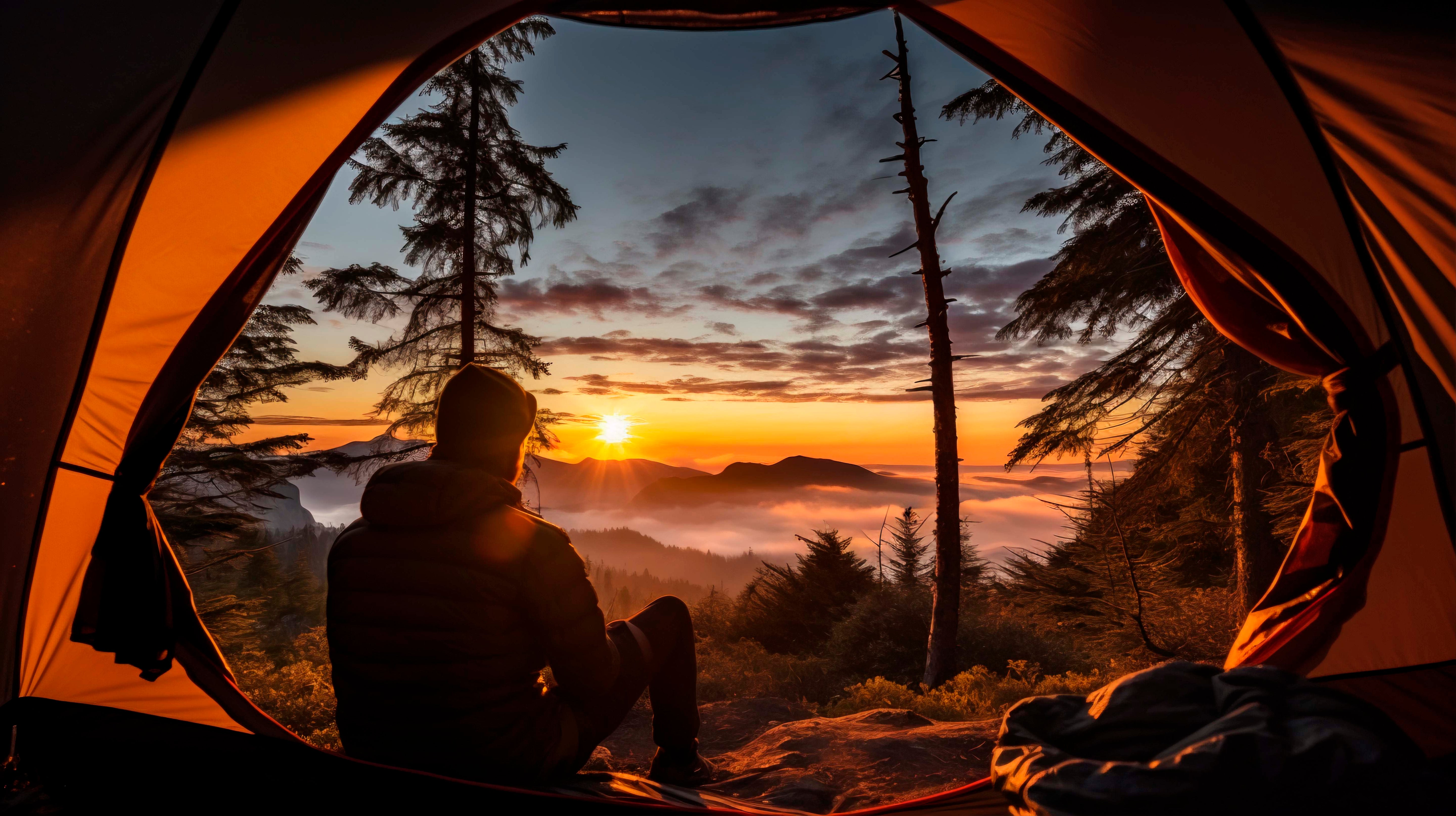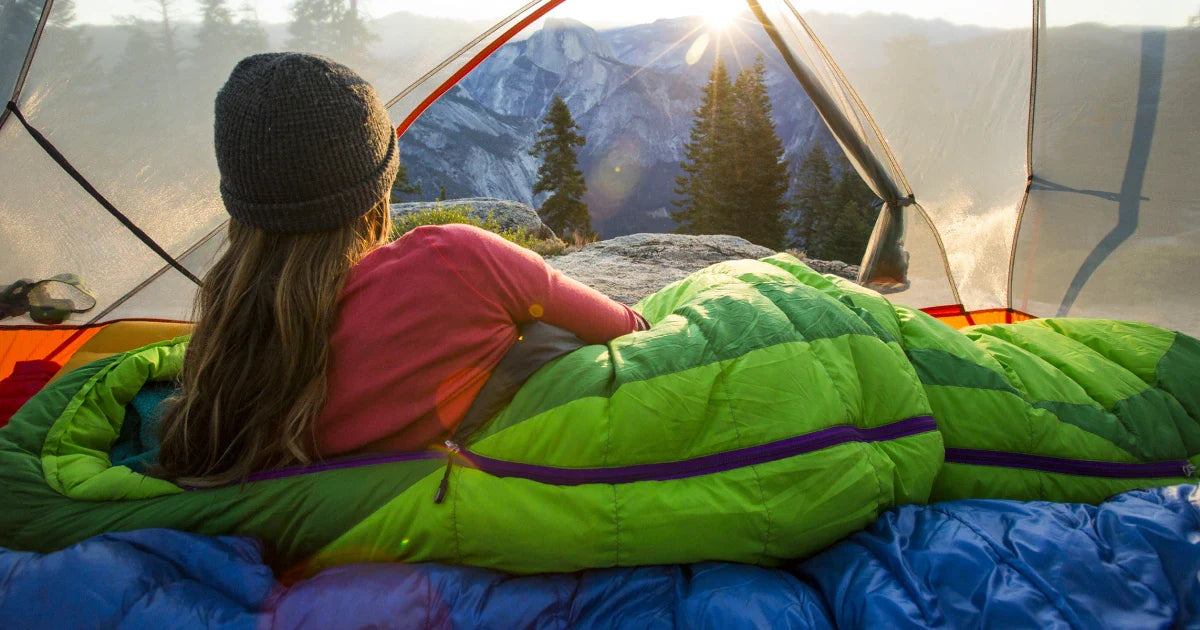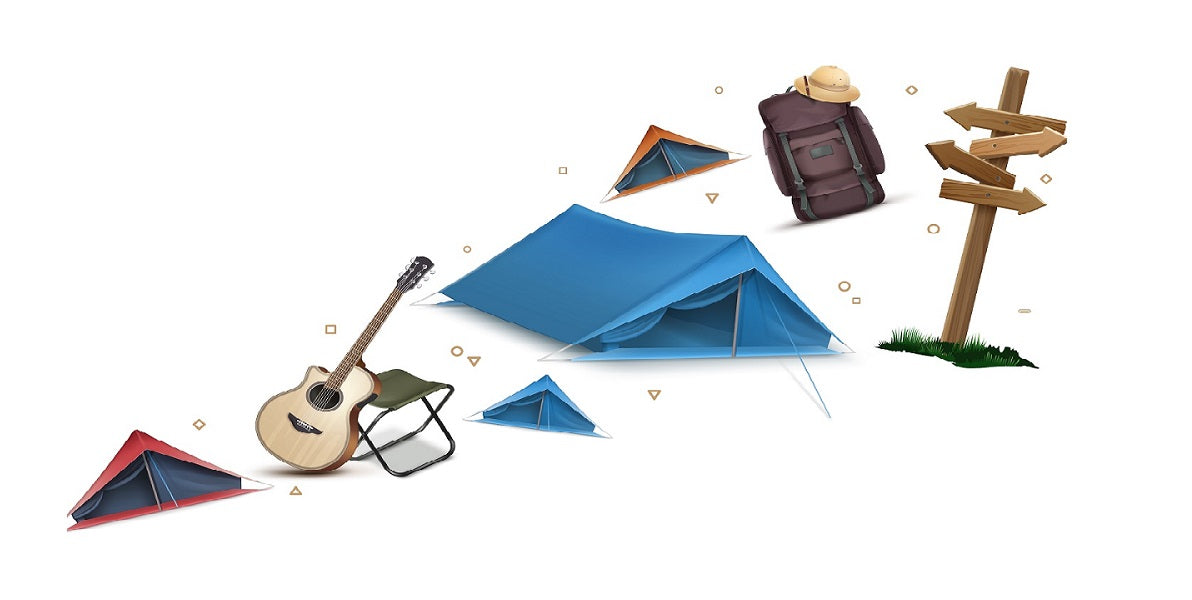
Best Camping Sites in Canada: An Outdoor Lover's Guide
Canada, with its vast wilderness and diverse landscapes, is a paradise for camping enthusiasts. From the towering Rockies to serene coastal retreats, the country offers a variety of camping experiences that cater to different preferences and levels of adventure. Whether you're looking for a family-friendly campsite or a remote backcountry experience, Canada has something for everyone. Here’s a comprehensive guide to some of the best camping sites in the country, ensuring a memorable outdoor adventure for all types of campers.
1. Banff National Park, Alberta
Overview
Banff National Park, the first national park established in Canada, is renowned for its stunning alpine scenery, glacial lakes, and abundant wildlife. It offers a range of camping options from front-country sites with amenities to backcountry sites for the more adventurous.
Popular Campsites
- Tunnel Mountain Campgrounds: Located close to the town of Banff, these campgrounds offer easy access to amenities and are great for families and first-time campers.
- Lake Louise Campground: Situated near the iconic Lake Louise, this site is perfect for those looking to explore the lake and its surrounding trails.
Activities
- Hiking and mountain biking
- Canoeing and kayaking on Lake Louise and Moraine Lake
- Wildlife viewing
- Hot springs
Read Also: Best Camping Sites in the United States
2. Jasper National Park, Alberta
Overview
Jasper National Park is a UNESCO World Heritage site known for its vast wilderness, clear skies, and stunning natural attractions. It is a haven for stargazers, with the Jasper Dark Sky Preserve being one of the best places to view the night sky.
Popular Campsites
- Whistlers Campground: The largest campground in Jasper, it offers a variety of amenities and is suitable for both tents and RVs.
- Wapiti Campground: Located along the Athabasca River, this site is open year-round and offers a peaceful setting with stunning views.
Activities
- Stargazing at the Dark Sky Preserve
- Exploring Maligne Lake and Spirit Island
- Hiking the Athabasca Glacier
- Wildlife tours
3. Pacific Rim National Park Reserve, British Columbia
Overview
Situated on Vancouver Island, Pacific Rim National Park Reserve is famous for its rugged coastline, lush rainforests, and rich Indigenous culture. It offers a unique coastal camping experience with opportunities for both beach and forest camping.
Read Also: 10 Must-Have Essentials for Your Outdoor Adventure
Popular Campsites
- Green Point Campground: Overlooking Long Beach, this site offers stunning ocean views and easy access to the beach.
- Backcountry Camping: For a more remote experience, consider backcountry camping along the West Coast Trail or the Broken Group Islands.
Activities
- Surfing and beachcombing at Long Beach
- Hiking the West Coast Trail
- Kayaking in the Broken Group Islands
- Learning about Indigenous culture and history
4. Gros Morne National Park, Newfoundland and Labrador
Overview
Gros Morne National Park is a UNESCO World Heritage site known for its dramatic landscapes, including fjords, mountains, and unique geological features. It offers a range of camping options in a truly unique setting.
Popular Campsites
- Green Point Campground: Nestled along the coast, this site offers stunning views and easy access to hiking trails.
- Berry Hill Campground: Centrally located, it provides a good base for exploring the park’s many attractions.
Activities
- Exploring the Tablelands, a unique geological formation
- Hiking the Gros Morne Mountain trail
- Boat tours in Western Brook Pond
- Visiting the Lobster Cove Head Lighthouse
5. Algonquin Provincial Park, Ontario
Overview
Algonquin Provincial Park is one of Ontario’s most popular camping destinations, known for its stunning lakes, dense forests, and diverse wildlife. The park offers a variety of camping experiences from car camping to remote backcountry sites.
Read Also: Trekking Essentials 2024: Must-Haves for Your First Hike
Popular Campsites
- Lake of Two Rivers Campground: Centrally located, this site offers a range of amenities and is great for families.
- Rock Lake Campground: Situated along the shores of Rock Lake, this site offers a more serene and secluded experience.
Activities
- Canoeing and kayaking on the park’s many lakes and rivers
- Hiking the numerous trails, such as the Lookout Trail and Centennial Ridges Trail
- Wildlife viewing, particularly moose and beavers
- Fishing and swimming
6. Cape Breton Highlands National Park, Nova Scotia
Overview
Cape Breton Highlands National Park, located on Cape Breton Island, is known for its stunning coastal scenery, highland plateaus, and vibrant Celtic culture. The park offers a variety of camping options with spectacular views.
Popular Campsites
- Broad Cove Campground: Located near the coast, this site offers easy access to hiking trails and beaches.
- Ingonish Beach Campground: Situated near a sandy beach, this site is perfect for families and beach lovers.
Activities
- Driving the Cabot Trail, a scenic coastal route
- Hiking the Skyline Trail for breathtaking views
- Whale watching and boat tours
- Exploring the local culture and music
7. Prince Edward Island National Park, Prince Edward Island
Overview
Prince Edward Island National Park is famous for its red sand beaches, sand dunes, and cultural heritage. It offers a relaxed camping experience with beautiful coastal scenery.
Read Also: How Sleeping Bag Design Can Enhance Your Camping Comfort
Popular Campsites
- Cavendish Campground: Located near the beach, this site offers a range of amenities and is great for families.
- Stanhope Campground: Situated near Covehead Bay, this site offers a peaceful setting with stunning views.
Activities
- Beachcombing and swimming at Cavendish Beach
- Cycling the Confederation Trail
- Exploring Green Gables Heritage Place
- Bird watching and nature walks
8. Kluane National Park and Reserve, Yukon
Overview
Kluane National Park and Reserve is known for its rugged mountains, vast glaciers, and abundant wildlife. It offers a true wilderness camping experience in one of Canada’s most remote and pristine environments.
Popular Campsites
- Kathleen Lake Campground: Located near a stunning glacial lake, this site offers a peaceful setting with beautiful views.
- Backcountry Camping: For a more adventurous experience, consider backcountry camping in the park’s vast wilderness.
Activities
- Hiking and mountaineering, including the challenging Donjek Route
- Wildlife viewing, particularly grizzly bears and Dall sheep
- Boating and fishing on Kathleen Lake
- Exploring the park’s glaciers and icefields
9. Fundy National Park, New Brunswick
Overview
Fundy National Park is famous for having the highest tides in the world, rugged coastline, and lush Acadian forest. It offers a variety of camping experiences with stunning views and unique natural features.
Popular Campsites
- Chignecto North Campground: Located in the forest, this site offers a peaceful setting with easy access to hiking trails.
- Point Wolfe Campground: Situated near the coast, this site offers stunning views and a more rustic camping experience.
Activities
- Witnessing the dramatic tides of the Bay of Fundy
- Hiking the Dickson Falls and Caribou Plains trails
- Kayaking and exploring the coast
- Visiting the Fundy Geological Museum
10. Riding Mountain National Park, Manitoba
Overview
Riding Mountain National Park is known for its diverse ecosystems, including forests, grasslands, and wetlands. It offers a range of camping options with opportunities to explore its rich natural and cultural heritage.
Read Also: The 10 Most Important Things to Bring Outdoor Camping
Popular Campsites
- Wasagaming Campground: Located near Clear Lake, this site offers a range of amenities and is great for families.
- Lake Audy Campground: Situated in a more remote area, this site offers a peaceful and rustic camping experience.
Activities
- Hiking and biking the park’s numerous trails
- Canoeing and kayaking on Clear Lake
- Wildlife viewing, particularly bison and black bears
- Visiting the Wasagaming townsite for cultural and historical attractions
11. Yoho National Park, British Columbia
Overview
Yoho National Park, located in the Canadian Rockies, is known for its dramatic waterfalls, towering peaks, and beautiful lakes. It offers a range of camping experiences in a stunning alpine setting.
Popular Campsites
- Kicking Horse Campground: Located near the town of Field, this site offers easy access to amenities and popular attractions.
- Monarch Campground: Situated in a more secluded area, this site offers a peaceful and scenic camping experience.
Activities
- Exploring the stunning Takakkaw Falls
- Hiking the Iceline Trail for breathtaking views
- Canoeing on Emerald Lake
- Visiting the Burgess Shale fossil beds
12. Bruce Peninsula National Park, Ontario
Overview
Bruce Peninsula National Park, located on the Bruce Peninsula, is known for its rugged cliffs, clear blue waters, and unique geological features. It offers a range of camping options with stunning views and opportunities for outdoor activities.
Read Also: Conquer Any Climate: 4-Season Tents to Brave the Elements
Popular Campsites
- Cyprus Lake Campground: Located near the park’s main attractions, this site offers a range of amenities and is great for families.
- Backcountry Camping: For a more remote experience, consider backcountry camping along the Bruce Trail.
Activities
- Hiking the Grotto and Bruce Trail
- Swimming and snorkeling in the clear waters of Georgian Bay
- Exploring the Flowerpot Island
- Visiting the Fathom Five National Marine Park

Tips for a Successful Camping Trip in Canada
1. Plan Ahead
- Make reservations in advance, especially for popular campsites.
- Check the park’s website for any alerts or updates.
2. Pack Appropriately (Continued)
- Ensure you have adequate food and water supplies, especially if you're heading to a remote location.
- Don’t forget essentials like a first-aid kit, flashlight, and multi-tool.
- If camping in bear country, bring bear-proof food containers and be aware of bear safety protocols.
3. Know the Regulations
- Familiarize yourself with the park’s rules and regulations regarding campfires, fishing, and wildlife.
- Obtain any necessary permits, especially for backcountry camping or fishing.
4. Leave No Trace
- Practice Leave No Trace principles to minimize your impact on the environment.
- Pack out all your trash and dispose of waste properly.
- Respect wildlife and maintain a safe distance.
5. Stay Safe
- Be prepared for changing weather conditions, particularly in mountainous or coastal regions.
- Let someone know your itinerary and expected return time.
- Carry a map and compass, and know how to use them. GPS devices can be unreliable in remote areas.
6. Enjoy the Experience
- Take time to disconnect from technology and immerse yourself in nature.
- Engage in various activities like hiking, kayaking, or simply enjoying the scenery.
- Make memories with family and friends, and take plenty of photos to remember your adventure.
Important Things to Include in Your Camping Gear
When preparing for a camping trip, packing the right gear is crucial for ensuring comfort, safety, and an enjoyable experience. Whether you’re heading to a well-equipped campground or venturing into the backcountry, having the right equipment can make all the difference. Here’s a detailed list of essential items to include in your camping gear.
1. Shelter and Sleeping Gear
Tent
- Choose the Right Tent: Select a Camping tent that suits the weather conditions and the number of people camping. Ensure it's waterproof and easy to set up.
- Tent Footprint or Tarp: Protect the bottom of your tent from wear and tear by using a footprint or tarp underneath.
Read Also: Most Forgotten Camping Items
Sleeping Bag
- Temperature Rating: Choose a sleeping bag appropriate for the expected temperatures. Mummy bags are great for cold weather, while rectangular bags offer more space for warmer conditions.
Sleeping Pad or Air Mattress
- Insulation and Comfort: A sleeping pad or air mattress provides insulation from the cold ground and adds comfort. Foam pads are lightweight and durable, while inflatable pads offer more comfort.
Pillow
- Compact and Comfortable: A compact camping pillow can enhance your sleep quality. Alternatively, you can use a stuff sack filled with clothes as a makeshift pillow.
2. Cooking and Food Supplies
Camp Stove or Portable Grill
- Fuel Type: Choose a stove or grill compatible with readily available fuel in your camping area. Propane and butane stoves are common options.
- Backup Fuel: Bring extra fuel canisters to ensure you don’t run out.
Cookware and Utensils
- Pots and Pans: Bring lightweight, durable pots and pans suitable for your cooking needs.
- Cooking Utensils: Pack a spatula, tongs, and a stirring spoon.
- Eating Utensils: Include forks, knives, spoons, and reusable plates and bowls.
Food and Storage
- Non-Perishable Foods: Bring foods that don’t require refrigeration, such as canned goods, pasta, rice, and snacks.
- Cooler: For perishable items, use a cooler with ice packs to keep them fresh.
- Bear-Proof Containers: If camping in bear country, store food in bear-proof containers or hang it in a tree away from your campsite.
Water and Hydration
- Water Containers: Bring enough water and Hydration for drinking, cooking, and cleaning. Collapsible water containers are a space-saving option.
- Water Filter or Purification Tablets: If relying on natural water sources, bring a water filter or purification tablets to make the water safe for drinking.
3. Clothing and Personal Items
Weather-Appropriate Clothing
- Layering System: Use a layering system to adapt to changing weather conditions. Base layers wick moisture, insulating layers provide warmth, and outer layers protect against wind and rain.
- Rain Gear: Pack a waterproof jacket and pants to stay dry in wet conditions.
- Hat and Gloves: Bring a warm hat and gloves for cold weather, and a sun hat for protection from the sun.
Footwear
- Hiking Boots or Shoes: Choose sturdy, comfortable footwear suitable for the terrain you’ll be exploring.
- Camp Shoes: Bring lightweight shoes or sandals to wear around the campsite.
Personal Hygiene Items
- Biodegradable Soap: Use biodegradable soap for washing to minimize environmental impact.
- Toothbrush and Toothpaste: Pack travel-sized versions to save space.
- Towel: A quick-drying camping towel is lightweight and compact.
- Toilet Paper: Bring a roll in a waterproof bag, along with a small trowel for digging a cat hole if needed.
4. Safety and Navigation
First-Aid Kit
- Comprehensive Kit: A well-stocked first-aid kit should include bandages, antiseptic wipes, pain relievers, tweezers, and any personal medications.
- Emergency Contact Information: Include a list of emergency contacts and any important medical information.
Navigation Tools
- Map and Compass: Always carry a navigation tools like map of the area and a compass, and know how to use them.
- GPS Device: A GPS device or smartphone with offline maps can be helpful, but don’t rely solely on electronic devices.
Lighting
- Headlamp or Flashlight: Bring a reliable headlamp or flashlight with extra batteries.
- Lantern: A battery-powered lantern can provide ambient light around the campsite.
Multi-Tool or Knife
- Versatile Tool: A multi-tool or camping knife is invaluable for a variety of tasks, from preparing food to repairing gear.
5. Camp Comfort and Extras
Camp Chairs and Table
- Seating: Lightweight, foldable camp chairs provide comfort around the fire or at meal times.
- Portable Table: A small, portable table can be useful for meal preparation and eating.
Fire Starting Supplies
- Matches and Lighters: Bring waterproof matches and a couple of lighters.
- Fire Starter: Fire starters or tinder can make starting a campfire easier, especially in wet conditions.
Insect Repellent and Sunscreen
- Bug Protection: Insect repellent is essential in areas with mosquitoes and other pests.
- Sun Protection: High-SPF sunscreen helps protect your skin from harmful UV rays.
Entertainment
- Books or e-Reader: Bring a good book or e-reader for relaxation.
- Games: Pack lightweight games, like cards or travel-sized board games, for fun at the campsite.
- Binoculars: Great for bird watching or observing distant landscapes.
6. Waste Management
Trash Bags
- Leave No Trace: Bring sturdy trash bags to pack out all your waste. Follow Leave No Trace principles to minimize your impact on the environment.
Hygiene Bags
- Personal Waste: If you need to pack out personal waste, bring sealable hygiene bags designed for this purpose.
Packing the right gear is essential for a successful and enjoyable camping trip. By including these important items in your camping checklist, you’ll be well-prepared for a variety of conditions and activities, ensuring a comfortable and safe outdoor experience. Remember to plan ahead, respect nature, and embrace the adventure that awaits you in Canada’s beautiful wilderness. Happy camping!
Conclusion
Canada's diverse landscapes offer some of the best camping experiences in the world. Whether you prefer the majestic mountains of the Rockies, the serene lakes of Ontario, or the rugged coastlines of the Atlantic provinces, there's a perfect campsite waiting for you. By planning ahead, packing appropriately, and respecting nature, you can ensure a safe and enjoyable camping trip. So pack your gear, gather your loved ones, and head out to explore the natural beauty that Canada has to offer.













